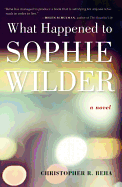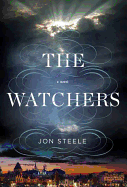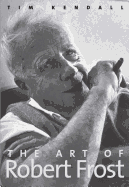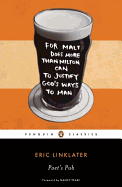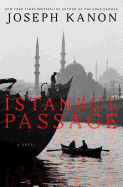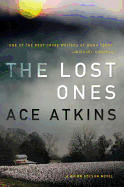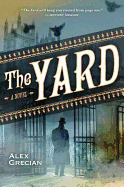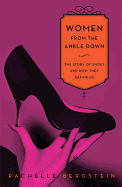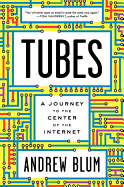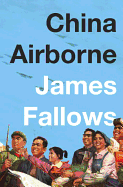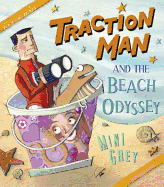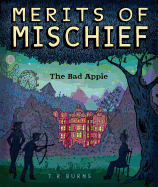Tuesday, June 5, 2012
Father's Day gift book suggestions are often useful clichés. So we'll go with a few of those, and toss in some outliers, like the hilarious The Household Tips of the Great Writers by Mark Crick (Granta Books, $16.95). You might not be able to put up a garden fence à la Hunter S. Thompson in "The Great Red Porcupine Trapped in the Snake Pit, Narco Guerrilla Gardening" (although the profanity fits the task), but you could make "Lamb with Dill Sauce" à la Raymond Chandler. The recipe starts: "I sipped on my whiskey sour, ground out my cigarette on the chopping board and watched a bug trying to crawl out of the basin. I needed a table at Maxim's, a hundred bucks and a gorgeous blonde; what I had was a leg of lamb and no clues."
Another book of tips comes from Quirk Books: Stuff Every Dad Should Know by Brett Cohen ($9.95). He begins with--surprise!--how to start saving for college, then segues into changing a diaper and ends with meeting your child's in-laws. It's all laid out with common sense and a sense of humor.
How about Does This Baby Make Me Look Straight? (Touchstone, $14.99 trade paper). Dan Bucatinsky's stories of being a gay dad are revealing, heartwarming, comical and universal: What parent hasn't blanched at a child telling him to smell her fingers? "Nothing good ever comes after those words."
After the death of Robert B. Parker, Ace Atkins is continuing the magnificent Spenser series with Robert B. Parker's Lullaby (Putnam, $26.95). Our reviewer said, "Taking on the challenge... is a daunting task. Atkins responds with a knock-out punch in round one. Parker would most definitely approve."
No Father's Day list would be complete without a grilling book, like Grilling Vegan Style by John Schlimm (Da Capo, $20 trade paper). Marinate tofu in brown sugar and bourbon. Grill pineapple, strawberries, peaches, cantaloupe, or zucchini, squash and tofu for "Presto Pesto No-Bake Lasagna." Yum. --Marilyn Dahl, reviews editor, Shelf Awareness
What Happened to Sophie Wilder
by Christopher R. Beha
Christopher Beha's short but intricately constructed first novel, What Happened to Sophie Wilder, tells the story of two young writers struggling to discover their personal and professional identities.
Sophie Wilder and Charlie Blakeman met in a college creative writing course," a period Beha revisits through flashbacks. Now, a decade later, Charlie has written a first novel whose critical reception is as disappointing as its sales, while Sophie has produced a dazzling story collection that holds the promise of a bright literary career.
For both of them, the way forward has turned murky at best. Charlie is producing no new writing, and Sophie's marriage to another classmate is foundering. Her life is further upended when the father her husband has claimed is long dead enters their lives, now truly dying of cancer. Sophie becomes his caregiver, a position that forces her to confront troubling ethical questions as the dying man makes it clear he wants her to hasten his end.
Beha writes with an absence of irony about Sophie's moral crisis and her gradual conversion to Catholicism, spurred by an encounter with a compassionate priest and her discovery of a convent near the home she inherited from her parents after they were killed in a car crash when she was a teenager.
On the surface, Charlie and Sophie have it all. At one point, Charlie says, "We had been given something beautiful, asked only to watch over it. We'd been careless, and now it was all in ruin." That rueful comment could well serve as the epitaph for the lives sketched in this challenging story. --Harvey Freedenberg
Discover: Christopher Beha's first novel sketches the personal and professional struggles of two young writers.
Poet's Pub
by Eric Linklater
Welcome to Erik Linklater's Poet's Pub. The year is 1929, and you've arrived at an inn in Downish, England. Your fellow travelers include a professor and his charming daughter, two Americans--a businessman and a book collector (or is he?)--a secretive red-haired chambermaid and Lady Porlet, "who had never written anything (for she had rheumatic finger joints) and never read anything (for she had no brains) and never been out of England, for she had no interest in foreign parts."
Overseeing this eclectic group is Saturday Keith, new to the innkeeper position but experienced as a poet, albeit a deservedly underappreciated one. Saturday soon takes to his new task, engaging the guests and composing an expansive, Elizabethan-era menu. "He worked on it as if it had been a sonnet," Linklater writes, "polishing, cutting, dove-tailing, striving for significance in every line."
Like Saturday's "lamb's wool" cocktail, the plot thickens. The poet and the daughter fall in love; the son of Lady Mercy, the inn's owner, is besotted with the chambermaid, who confides she's entangled in a Russian plot; the bartender's secret recipe is missing! A dark and stormy night, a car chase over hill and dale, kidnapping, a stowaway, purloined (bad) poems and revelations of human foibles and quirks propel Linklater's story to its delightful, tidy conclusion. Nancy Pearl offers an affectionate introduction to this classic novel, one of the first books commissioned by Penguin founder Allen Lane. --Cheryl Krocker McKeon, bookseller
Discover: A delightful classic British paperback set in a proper country inn with a full retinue of eclectic guests.
Mystery & Thriller
The Watchers
by Jon Steele
Marc Rochat spends his evenings in the tower of a cathedral in Lausanne, Switzerland. He bears a heavy responsibility: "This is the last good place in a world of terrible sadness," his predecessor explains to him. "You must never fail to call the hour, you must always protect the bells and call the hour." And if he happens to engage the bells in conversation while he's guarding them, well, anyone can see he's a true innocent--a little slow, maybe (or maybe not), but sweet and harmless.
It won't take you long to figure out that Rochat has been groomed for his postion as le guet--"the watchman," loosely translated--but by whom, and for what purpose? Naturally, it has something to do with the other two people who are drawn to the cathedral: Katherine Taylor, a call girl on retainer to some of the world's wealthiest men, and Jay Harper, a British detective who--for some reason--can't remember much about his life before he showed up in Lausanne.
In this debut novel, Steele veers deep into Dan Brown territory by way of the apocryphal Book of Enoch, an ancient text describing a race of rebellious angels who consorted with human women, creating the half-breeds of the Nephilim. Steele plunges wholeheartedly into this mythology, infusing it with modern permutations--with Harper's hard-boiled skepticism a mirror for readers' own likely reluctance to suspend disbelief. Rochat is convinced Katherine is a "lost angel," and not just metaphorically. Steele teases his answers out slowly at first, but once he's got everything lined up the way he wants it, the final act is pure blockbuster. --Ron Hogan
Discover: Jon Steele's take on the alternative theological thriller blends the legends of a suppressed ancient text with pulp noir archetypes and a sweet but simple man on the side of the angels.
Istanbul Passage
by Joseph Kanon
Joseph Kanon creates heart-stopping suspense in Istanbul Passage, his sixth international thriller. After the end of World War II, American businessman Leon Bauer takes on a deadly assignment when he agrees to help smuggle a Romanian with information on the Soviets through the Turkish city--a setting ripe for espionage.
Hauntingly atmospheric, rich with historic detail and tantalizingly emotional, Istanbul Passage snags readers from the first page when, with Leon, we shiver on the cold, dark shore of the Bosphorus. When the pick-up goes awry, we're immersed with Leon in danger and political intrigue, as vulnerable as he is to the agents, double-agents, local politicos, loyalties to friends--and unexpected love.
Kanon skillfully blends fact with fiction in his descriptions of Istanbul during a period when hopeful Jews came to the city on their way to refuge in Palestine. Leon's wife, a German Jew who organized these escapes, is in a catatonic state following a sinking of one of the ships in the Bosphorus Strait. He stays in Istanbul for her--and for memories of their happier days in the charming city.
His circle is eclectic: tobacco company colleagues, fellow humanitarians aiding Jews, the former member of a harem who oversees Istanbul society from her lavish historic mansion. But who are friends, and who are foes? Soviet agents, the Turkish intelligence organization, the Romanian, the beautiful American widow--all are players as Leon's position becomes more precarious, and the suspense runs until the last page. --Cheryl Krocker McKeon, bookseller
Discover: Political intrigue in 1945 Istanbul as an American businessman is caught up in postwar cat-and-mouse espionage.
The Lost Ones
by Ace Atkins
When Ace Atkins introduced Quinn Colson in 2011's The Ranger, the army Ranger came home on leave and exposed a corruption ring responsible for the death of his uncle, the local sheriff. In the sequel, The Lost Ones, Colson is done with military service and wearing the sheriff's uniform when the suspicious death of a foster child leads him into a hornet's nest of illegal activity, including running guns and selling children.
Despite Atkins's dark subject matter, he manages to weave an exceptional sense of humor into this novel. From Colson's wise-cracking chief deputy, Lillie Virgil, to the often humorous conflicts the new sheriff encounters when he has to observe county law as opposed to wartime protocol, there's an easiness in the tone that balances the ugliness of the crimes.
Caddy, Colson's sister, returns to play a prominent role, revealing more of the family history, and Atkins seems to be setting up Colson's disabled veteran buddy, Boom, for substantial face time in future novels. All of the characters have their dysfunctions, but the weaknesses of any one fit nicely with the strengths of the others, creating a cast of essential characters rather than one standout.
As the various elements of the plot weave together, the significance of the title grows. In some way, we're all lost, and that common thread will allow readers to connect with the novel on an intimate, personal level. Following up an Edgar-nominated novel can be a challenging task--with The Lost Ones, Ace Atkins makes it look easy. --Jen Forbus of Jen's Book Thoughts
Discover: The second novel in the Quinn Colson series is a multi-layered crime novel that proves Ace Atkins is anything but lost in this genre.
The Yard
by Alex Grecian
London changed after Jack the Ripper's murders; the unsolved killings left behind a city terrified of its own shadow and with little to no respect for the police force. The gruesome killings also fueled the creation of "The Murder Squad"--a team of 12 detectives at Scotland Yard assigned to investigate only homicides. But the stakes are raised when the victim in one of their cases turns out to be one of their own, and the freshman squad of detectives must reckon with a new kind of killer--one who acts not out of passion or motive, but out of a compulsive need to kill. Welcome to the age of the serial killer.
The Yard, Alex Grecian's debut novel, draws on true historical situations as the backdrop for the story of the murdered detective. The Murder Squad was a real entity, founded in 1889 to combat the rise of crime in London and to help redeem the police in the eyes of the public after the failure to identify Jack the Ripper. Into this world, Grecian introduces Inspector Walter Day, the newest member of the Murder Squad, assigned to the case of the murdered squad member. But The Yard doesn't stop there; Grecian weaves together multiple cases, reflecting with historical accuracy the overworked nature of the Murder Squad, the interrelated nature of their cases and the advent of forensic science in aiding investigations. Packed with period detail, The Yard is both a well-crafted mystery and careful study of an important era of criminology, making for one captivating read. --Kerry McHugh, blogger at Entomology of a Bookworm
Discover: A well-crafted mystery of the Victorian era, rife with period details and fascinating insight into the advent of forensic science.
History
Women from the Ankle Down: The Story of Shoes and How They Define Us
by Rachelle Bergstein
Like many women, Rachelle Bergstein has a thing for shoes--but her obsession, or maybe her willingness to research it, runs deeper than most. Pondering what makes shoes such an object of desire and affection, Bergstein digs into the sartorial history of the 20th century to find out. She explores how shoes reflect not only volatile fashion trends, but also the constantly evolving role of women in society, from marching suffragettes to Nancy Sinatra's made-for-walking boots and Carrie Bradshaw's closetful of Manolos.
Beginning with the tale of an Italian cobbler named Salvatore Ferragamo, Bergstein traces the role of shoes in each epoch of 20th-century in the U.S. She mentions such iconic footwear as Dorothy's ruby slippers, the pumps worn by femmes fatales and pinup girls, the Birkenstocks favored by flower children and the Doc Martens Bergstein herself loved as a teenager. She places each style in the context of its historical moment, also exploring the industry's shift from handmade, custom-stitched shoes to piles of cheaper, mass-produced offerings.
Couture gets plenty of airtime, but Bergstein also devotes space to mid-market brands familiar to consumers who lack Carrie Bradshaw's shoe budget. And since shoes and Hollywood fit each other with Cinderella perfection, the cast of characters includes plenty of stars: Lana Turner, Marilyn Monroe, Jane Fonda and many more.
In Bergstein's hands, the story of footwear since 1900 becomes in large part the story of femininity in contemporary American culture. Both intertwined narratives prove as compelling as--what else?--a gorgeous pair of shoes. --Katie Noah Gibson, blogger at Cakes, Tea and Dreams
Discover: The story of shoes since 1900 has both reflected and shaped the story of women in contemporary American culture.
Tubes: A Journey to the Center of the Internet
by Andrew Blum
When Andrew Blum's Internet service stopped working a few years ago, he was told it could be the result of a squirrel chewing on the fiber lines running into his neighborhood. Though the connection eventually returned, Blum was left with nagging questions about the physicality of the Internet: How could something so ethereal, so intangible, be impacted by something so physical, so mundane? And so began Blum's journey to the center of the Internet, as detailed in Tubes.
Blum begins with the creation of the Internet, noting that despite the groundbreaking nature of the moment, it was actually a little-understood moment in technological history. Like oxygen, the Internet is not something we question, but something we take for granted. Tubes, with its detailed account of everything from the physical structures of the network to the practicalities of laying fiber underground, changes that, giving readers a newfound appreciation of the networks that have changed our way of life to the very core. Blum's uncovering of the physical nature of the Internet also gives readers new insight into how it came to be the way it is: why Google has buildings in certain locations, why collaboration is so critical to the Internet's continued success or why one woman with a shovel can accidentally take the entire country of Armenia offline.
Tubes is fascinating reading for anyone with even a passing interest in the Internet--and if you're reading this online, you're likely one of those people. --Kerry McHugh, blogger at Entomology of a Bookworm
Discover: A fascinating exploration of the physical nature of the Internet, and how the "network of networks" came to be the way it is.
Current Events & Issues
China Airborne
by James Fallows
Buoyed by its newfound economic wealth, China prepared an ambitious undertaking to become a major global player in the aerospace and aviation industries. China Airborne documents this effort to conquer a new frontier. Aviation enthusiast James Fallows, a national correspondent for the Atlantic, traveled to China to witness this birth from blueprint to reality.
The Chinese government's 12th "Five-Year Plan" (2011-2015) calls for the establishment of new airports in remote areas at an estimated cost of $230 billion, five to 10 times more than the United States would budget for its own aviation programs. Armed with the attitude that all "things are possible," the Chinese are forging an industry in the image of its cultural and political beliefs, following similar trajectories that have led to prominence in electronics and telecommunications. Seeking to take advantage of this new cash cow, major American and European players, Boeing among them, courted the Chinese government with promises of new factories and training programs established on Chinese soil, not realizing that the Chinese penchant to usurp and assimilate would leave them on the outside looking in.
Fallows writes with a trained eye on the political and economic machinery fueling China's Master Plan, despite deep regional divisions that often threaten to derail these efforts. As China reverts to its heavy-handed political ways, the question won't be when China will reach the aviation maturity that allows necessary innovation to flourish, but if it ever will. --Nancy Powell, freelance writer
Discover: James Fallows's in-depth, balanced account of China's pursuit of rapid dominance in the fields of aviation and aerospace.
Essays & Criticism
The Art of Robert Frost
by Tim Kendall
With more than 650 articles or books about his poetry, Robert Frost may be one of the best known, most studied American poets in our history; despite all that, he may also be one of our least understood. Tim Kendall, British poet, editor and professor, has married criticism to anthology with his new addition to the Frost critical canon. The result is a useful collection of a significant portion of Frost's work with short critiques following each poem.
Kendall not only brings his own close reading to the poems, but also quotes generously from other critics and biographers to provide context and even opposing opinions. Kendall sprinkles many fresh insights among the familiar poems. For example, in the much-anthologized "Birches," Kendall notes, "Frost's fully realized account of the boy's swinging is produced 'with the same pains you use to fill a cup / Up to the brim, and even above the brim.' That moment of fine excess describes the boy's careful climbing, but it also serves as Frost's own modus operandi in a poem which celebrates a sense of liberation via poise and endeavor."
While he occasionally slips into professor-speak, for the most part Kendall speaks with a common tongue that Frost would have appreciated. As Frost said about his poem "The Cow in Apple Time," it is really just "about a cow that runs amok in an orchard." With a poet as complex and deceptively simple as Frost, it is always worthwhile to have a fresh set of eyes and ears take a new look. --Bruce Jacobs, founding partner, Watermark Books & Cafe, Wichita, Kan.
Discover: Despite the plethora of existing critical studies of Robert Frost, British poet and editor Tim Kendall brings a fresh look to Frost's poems in this combination of anthology and critical study.
Children's & Young Adult
Traction Man and the Beach Odyssey
by Mini Grey
Mini Grey's third clever, funny and action-packed book about Traction Man once again demonstrates her (and the action figure's) staying power.
Purple endpapers introduce "fully posable" Beach Time Brenda and the full-size Brenda Bucket that you get "absolutely free" with purchase, hinting at the roles they will play. Grey gets all the details just right: the picnic on the beach, Granny and her "new Young Pet called Truffles," and a child's astonishment at the sea, as observed by Traction Man: "Look at that, Scrubbing Brush--it must be the Wide Ocean!... BIG AND SPARKLY." An aerial view of the beach gives readers a layout of the alcove where Granny sits with Truffles under an umbrella, a girl reads a book next to her doll (that looks just like Brenda), and the boy who carried Traction Man to the beach now places him in "the secret crevices of the Rockpool." The adventures reach a crescendo when Granny's puppy takes an interest in the toy hero ("Truffles must think Traction Man is some sort of bone"). Traction Man and Scrubbing Brush get swept out to sea, the Brenda Bucket factors in, as does a sand castle the girl and her dolls have been making. Children will enjoy charting the toys' progress--while the distraught boy can't. A redeeming act by Truffles saves the day.
Once again Grey masters the child's voice at play, evoking the joy of creating castles of sand and imagining the intellectual life of toys. --Jennifer M. Brown, children's editor, Shelf Awareness
Discover: Traction Man's third adventure, as strong as the others, in which he and his loyal pet get swept out to sea.
Merits of Mischief: The Bad Apple
by T.R. Burns
In Burns's (The Siren Novels) comical kickoff to a new series, a nondescript 12-year-old boy winds up in reform school due to a deadly apple incident.
Seamus Hinkle is the type of kid who can leave math class every Fish Stick Tuesday at exactly 11:17 to use the restroom without his teacher raising an eyebrow. That is, until he flings an apple to try to break up a fight and kills a teacher instead. Seamus's parents enroll him at Kilter Academy for Troubled Youth, a seemingly military-strict institution that whips rabble-rousers into shape. But the moment his parents leave, Seamus learns that Kilter is actually a training academy for professional mischief makers. Students earn coveted demerits for lying, stealing and cheating, and dreaded gold stars for goody two-shoes deeds like tattling. Seamus is certainly not ready for the Kilter faculty's all-too-eager meet-and-greet, hailing him as "Kilter Academy's very first murderer." As at any school, there are cliques: Biohazards use bodily functions to freak out others; the Artistes create disturbing works of art, and the Athletes do whatever it takes to win. And a variety of menacing devices are available for purchase. But there's a mystery hidden here, too. Faculty members are not always what they seem, and it takes more than a few pranks for Seamus to rise to the top of his class. This is ultimately a story of friendship, forgiveness and fighting for one's convictions. Boys and girls alike will enjoy the mischief--and may even pull a prank of their own. --Molly McLeod, middle school librarian
Discover: The hilarious story of an accidental delinquent sent to a reform school where all is not as it seems.


